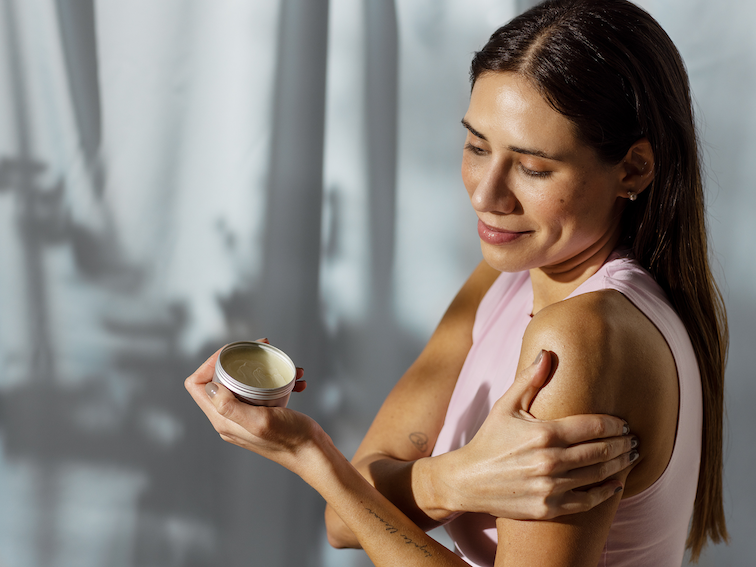Traditionally, skincare products were selected based on "skin types" such as oily, dry, or normal. But is this classification really useful or just a marketing gimmick? This blog post questions the validity of skin types and shows why this approach may be outdated.
The role of marketing and consumers
Skin types primarily serve to give consumers the feeling they're receiving personalized care. Marketing campaigns reinforced the idea that every skin problem required a specific solution. Consumers thus became accustomed to classifying their skin into fixed categories, which influenced their product selection. The "tragic" part of this is that many people (including me for a long time 🙂) categorize themselves incorrectly!
The origins of skin types
The concept of skin types dates back to the early days of the cosmetics industry. While the first skin care products were relatively simple and often designed for "all skin types," the industry soon recognized that different skin needs exist. One of the first pioneers in this field was Helena Rubinstein, who established the idea of skin types as a marketing strategy in the early 20th century (and made millions doing it, yes!). This began the classification of skin into oily, dry, and normal, laying the foundation for today's classifications.
Scientific basis of skin types: fact or fiction?
Although the classification of skin types is widely accepted, the scientific basis remains questionable. Skin is an extremely complex organ influenced by numerous factors, including genetics, environment, lifestyle, and age. Many of these factors are constantly changing, challenging rigid categorization. And then there's the difference between skin types and skin condition. In summary, this means: Skin type is your genetic basis, while skin condition can change over time – influenced by internal and external factors! 🌱💧

Scientific approaches such as the "Baumann Skin Typing System" from 2004 attempt to better capture this complexity, but are too complex for widespread acceptance.
My personal experience
During my training as a natural cosmetician, I had to study skin types in depth, among other things. I performed facial treatments on various people, and time and again I realized: There's no magic formula or products that work across the board. Rather, the miracle cure lies in getting to know ourselves better and understanding our skin. And last but not least, not overwhelming it with too many products. With this knowledge, I developed the SHEA YEAH product line .
"Less can be more! It's better to have a product that's specifically designed for ALL skin types and then customize it yourself!"
The future of skin care
The question that now arises is how we should approach skin care in the future. Instead of focusing on skin types, the future of cosmetics could lie in trying to get to know our skin better instead of listening to big marketing slogans. This way, we can identify individual skin needs and conditions and tailor our product use accordingly.
SHEA YEAH "for everyone"
With SHEA YEAH, I'm trying to offer skincare products that are no longer based on rigid categories, but are suitable for all skin types and can be individually adapted. For example: In winter, the skin needs more oil than in summer. So what do you do? You simply use a little more shea butter, from the same product, of course! This way, they can meet actual needs, especially when it comes to facial care . In my opinion, this is the only way to fully recognize the uniqueness of our skin.
Taking good care of yourself holistically is the most important thing for healthy skin!
All love
Sandra
Natural cosmetician and founder SHEA YEAH

Attachment:
Classic explanation "skin type"
Skin type is a given, i.e., the genetic basis of the skin. There are three types: oily, dry, and normal skin. Whether there is such a thing as "combination skin" (oily T-zone with forehead, nose, and chin, while dry cheeks) is controversial depending on the source. Even if skin type is genetically determined, we can influence it positively.
Classic explanation “skin condition”
The condition of our skin changes throughout our lives. External influences such as stress, diet, weather, or skincare products can lead to dehydrated, blemished, or sensitive skin.
But our age also influences it: the older we get, the more mature our skin becomes. We can't avoid the skin condition "mature skin." 🙂
Sources
Pappas A, et al; (2013): Age and ethnic variations in sebaceous lipids. Cosmetic skin types: myth or chaos? International Association for Applied Corneotherapy (2013).
K. Steventon, et al; Consumer Perspective—Skin Types and Sensory Experience, (2013), Cosmetics & Toiletries.
SW Youn, et al; (2002) Evaluation of facial skin type by sebum secretion: discrepancies between subjective description and sebum secretion.





